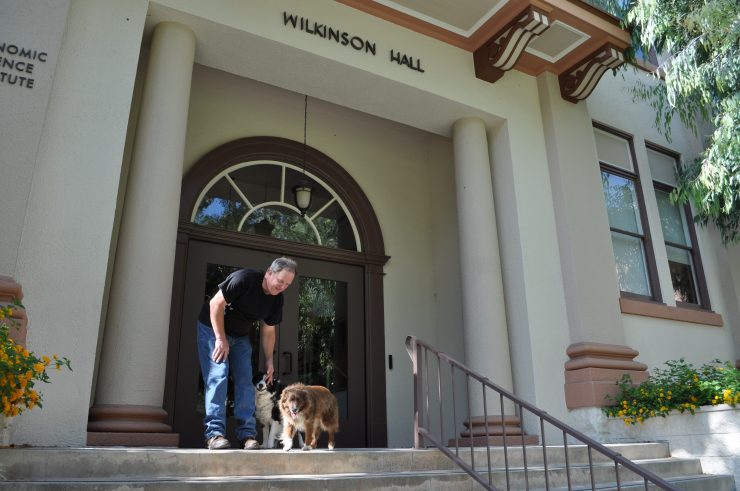If you find yourself whining and barking about the heat, it’s no wonder. These are the dog days of summer, after all. Around Chapman University, though, many of our better-behaved canine pals are year-round visitors. We celebrate that tradition in the photo gallery below.
But first, a history lesson about the dog days. It’s more than just a turn of phrase, says William Cumiford, Ph.D., associate professor of history at Chapman, and a scholar of ancient civilizations, the world where the expression had its cultural beginning. Read on for Cumiford’s quick take on the mythology, astronomy, history and even, ahem, chicken droppings that are all part of the dog days story.
“The mythology apparently extends to ancient Egypt with the rising of the star Sirius, the brightest in the heavens. In Greece and Rome, the star was considered a harbinger of bad omens, including heat, storms, lethargy, drought, bad luck and mad dogs. In Homer’s Iliad King Priam mentions “Orion’s Dog” (Sirius, appearing on 19 July) bringing a portent of evils, including fevers. Hesiod, in The Theogony, opined that the Dog Days occurred before the rising of Sirius.
The Romans, as usual, continued the legend when Virgil in The Georgics, a poem in praise to the pastoral life, cautioned vintners before planting to beware the Dog Star fires scorching the Earth. The Roman writer Pliny, in his Natural History, noted that dog attacks increased in July and August and recommended that they be fed chicken droppings to thwart this tendency!”
And now, here are just a few of the dogs of Chapman that charm us year-round. We’re sure none of them will require the Romans’ particular snack to keep them in line this summer.











